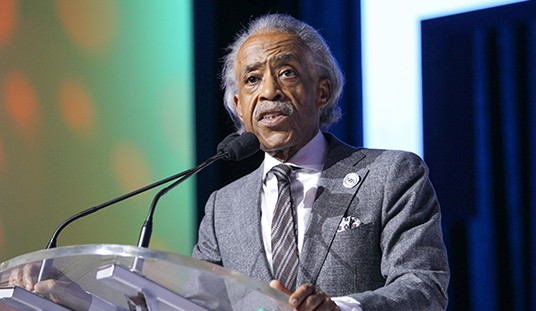You’re reading a post for Preparedness Week, a weeklong series of blogs about disaster and emergency preparation inspired by the launch of Freedom Academy’s newest e-book, Surviving the End: A Practical Guide for Everyday Americans in the Age of Terror by James Jay Carafano, Ph.D. You can download the e-book exclusively at the PJ Store here.
Who hasn’t fantasized about being the last man on Earth? The notion of having the whole world as your personal playground with unlimited resources and all the time you need to do whatever you want is a pretty enticing one.
At first glance anyway.
But then, as your imagination continued to explore the scenario, loneliness would enter the picture and then wild animals and pets gone feral, and physical injury that you might not be qualified to handle.
So your imaginings become broadened to include finding the last woman on Earth (beautiful naturally) and training yourself to handle weapons against both the beasts and other humans who’ve allowed their base instincts to overcome their civilized veneer.
From there, it’s a short step to fending off packs of other people eager to kill you and steal your supplies (not to mention that last beautiful woman).
Books such as M. P. Shiel’s classic Purple Cloud, movies like The World, the Flesh, and the Devil, and television episodes like the Twilight Zone‘s “Time Enough at Last” have all explored the theme of last survivors following some disaster that wipes out the human race, but few have dealt with a realistic approach to the theme: what would it be like to really live and survive in a post-disaster world?
That question is raised by terrorism expert and former Army Lt. Colonel James Jay Carafano in his new e-book Surviving the End: A Practical Guide for Everyday Americans in the Age of Terror.
In his book, Carafano provides a to-do list of items that any ordinary person can accomplish in preparation for not-too-unlikely end-times-type scenarios from cyber warfare and EMP events to terrorist-caused bio-warfare and natural disaster.
In his introduction, Carafano gets to the heart of the matter, making an argument that a logical approach based on traditional American self-reliance could go a long way in ensuring a person’s survival in a post-holocaust world, and that the shattered society can avoid the bloodletting that’s often depicted in Hollywood-style end of days epics:
The most useful steps for protecting everyday Americans against the very worst life has to has offer are about cultivating the kinds of commonsense skills, knowledge, and attributes that make for more productive, resilient and self-confident citizens…. They strengthen our faith in God, caring in our community, and love of family. They reduce stress, build confidence and inspire creativity. Every right-thinking American ought to be doing them anyway.
The author goes on to note how decades of Hollywood disaster films haven’t helped, conditioning people to think there will be no hope for the average person and that the only ones that will have a chance of surviving are the Rambo types who dispense with accepted moral conventions:
Hollywood’s message is there is no middle ground–no place for sensible, rational precautions or actions.
In general, the author’s estimation of how popular entertainment addresses post-disaster scenarios is pretty accurate — just take a look at any episode of TV’s The Walking Dead for instance. But there’s at least one exception I’d suggest: Panic in Year Zero!, a low-budget film released in 1962 that follows an average American family as they try to stay alive in the wake of a nuclear bomb falling on Los Angeles.
If Carafano’s advice on how to prepare for such a disaster is on the money, then Panic in Year Zero!, if not a perfect film, comes the closest to a realistic depiction of how an ordinary family can survive by “cultivating commonsense skills, knowledge, and attributes” that in turn allow its members to become “productive, resilient and self-confident.”
The movie, scripted by John Morton and Jay Simms, was directed by Ray Milland, who also doubled as the head of the family. In the cast, too, were Jean Hagen as his wife, and Frankie Avalon and Mary Mitchel as his teenage children.
Throughout the course of the film, as the family makes its way to a vacation cabin in the hills, the Milland character retains a cool head and his actions in protecting his family are always relentlessly logical, from his decision to head for the hills to gathering just the right kinds of supplies at stores along their route — which they reach just ahead of the fleeing multitudes — to instructing his son how and when to use a gun when encountering strangers.
And though the film’s focus is on the little things that the family does in order to survive (such as having each family member hide their food in different places without the others knowing where in order to prevent it all being taken should any one of them be forced to tell), there are dramatic exceptions such as when the family encounters a group of hoodlums intent on taking advantage of the breakdown of order. In an initial encounter, Milland and Avalon scare them off with guns but later, they discover them squatting in a farmhouse where they’ve killed the owner and are holding the daughter for their own pleasure.
At first, Milland restrains his son’s impulse to rush in and deal with the thugs. Keeping his family safe and hidden is his overriding concern. But when his own daughter is raped by one the hoodlums, he changes his tune and seeks retribution.
The sequence is necessary in order to keep the Milland character from becoming too unemotional and to suggest that there can be real danger in a post-apocalyptic world.
As the movie progresses, Milland’s stern but clear-eyed precautions and Hagan’s brave and caring example keep the family together. Praying before their first meal in the cave where they’ve decided to hole up, they struggle to preserve a sense of order in their lives while expressing the belief that civilization will soon reassert itself and allow them to come out of hiding.
The movie ends with their faith justified as the family comes into contact with military outliers of a resurgent civilization.
An American International release made with a budget of only $225,000, Panic in Year Zero! surprises in its realistic take on one family’s struggle in a post-apocalyptic environment, an exception to the Hollywood rule that one suspects might earn a thumbs up from Carafano!
Learn more about the inspiration for Disaster Week by downloading Surviving the End on the PJ Store today, and make sure your family is prepared.











Join the conversation as a VIP Member